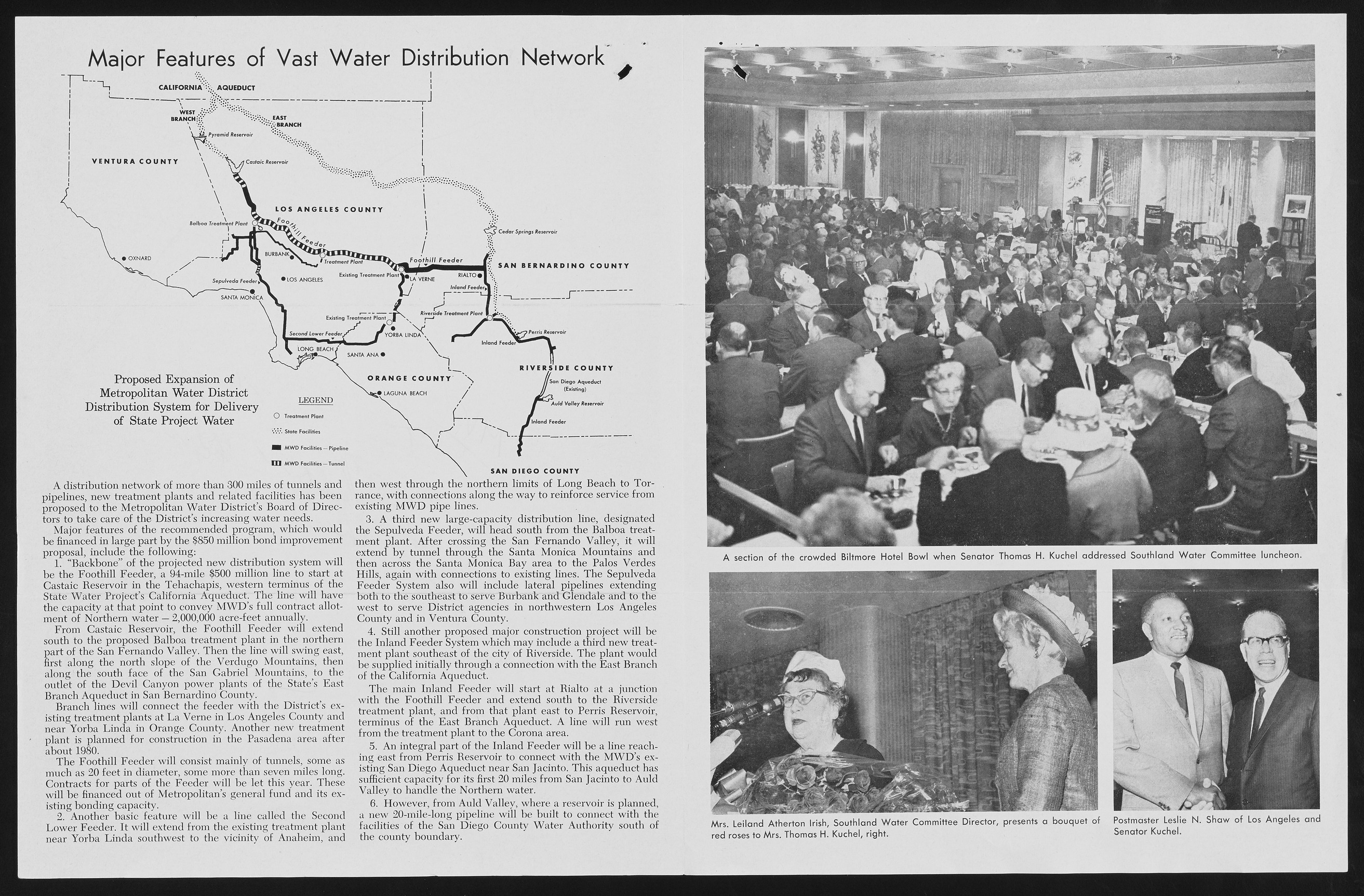Copyright & Fair-use Agreement
UNLV Special Collections provides copies of materials to facilitate private study, scholarship, or research. Material not in the public domain may be used according to fair use of copyrighted materials as defined by copyright law. Please cite us.
Please note that UNLV may not own the copyright to these materials and cannot provide permission to publish or distribute materials when UNLV is not the copyright holder. The user is solely responsible for determining the copyright status of materials and obtaining permission to use material from the copyright holder and for determining whether any permissions relating to any other rights are necessary for the intended use, and for obtaining all required permissions beyond that allowed by fair use.
Read more about our reproduction and use policy.
I agree.Information
Digital ID
Permalink
Details
Member of
More Info
Rights
Digital Provenance
Publisher
Transcription
Major Features of Vast Water Distribution Network Cedar Springs Reservoir S A N B E R N A R D I N O C O U N T Y Proposed Expansion of Metropolitan Water District Distribution System for Delivery of State Project Water (p Treatment Plant V.Y. State Facilities H I MWD Facilities — Pipeline M il MWD Facilities —Tunnel S A N D I E G O C O U N T Y A distribution network of more than 300 miles of tunnels and pipelines, new treatment plants and related facilities has been proposed to the Metropolitan Water District’s Board of Directors to take care of the District’s increasing water needs. Major features of the recommended program, which would be financed in large part by the $850 million bond improvement proposal, include the following: 1. “Backbone” of the projected new distribution system will be the Foothill Feeder, a 94-mile $500 million line to start at Castaic Reservoir in the Tehachapis, western terminus of the State Water Project’s California Aqueduct. The line will have the capacity at that point to convey M W D’s full contract allotment of Northern water — 2,000,000 acre-feet annually. From Castaic Reservoir, the Foothill Feeder will extend south to the proposed Balboa treatment plant in the northern part of the San Fernando Valley. Then the line will swing east, first along the north slope of the Verdugo Mountains, then along the south face of the San Gabriel Mountains, to the outlet of the Devil Canyon power plants of the State’s East Branch Aqueduct in San Bernardino County. Branch lines will connect the feeder with the District’s existing treatment plants at La Verne in Los Angeles County and near Yorba Linda in Orange County. Another new treatment plant is planned for construction in the Pasadena area after about 1980. The Foothill Feeder will consist mainly of tunnels, some as much as 20 feet in diameter, some more than seven miles long. Contracts for parts of the Feeder will be let this year. These will be financed out of Metropolitan’s general fund and its existing bonding capacity. ' 2. Another basic feature will be a line called the Second Lower Feeder. It will extend from the existing treatment plant near Yorba Linda southwest to the vicinity of Anaheim, and then west through the northern limits of Long Beach to Torrance, with connections along the way to reinforce service from existing M W D pipe lines. 3. A third new large-capacity distribution line, designated the Sepulveda Feeder, will head south from the Balboa treatment plant. After crossing the San Fernando Valley* it will extend by tunnel through the Santa Monica Mountains and then across the Santa Monica Bay area to the Palos Verdes Hills, again with connections to existing lines. The Sepulveda Feeder System also will include lateral pipelines extending both to the southeast to serve Burbank and Glendale and to the west to serve District agencies in northwestern Los Angeles County and in Ventura County. 4. Still another proposed major construction project will be the Inland Feeder System which may include a third new treatment plant southeast of the city of Riverside. The plant would be supplied initially through a connection with the East Branch of the California Aqueduct. The main Inland Feeder will start at Rialto at a junction with the Foothill Feeder and extend south to the Riverside treatment plant, and from that plant east to Perris Reservoir, •terminus of the East Branch Aqueduct. A line will run west from the treatment plant to the Corona area. 5. An integral part of the Inland Feeder will be a line reaching feast from Perris Reservoir to connect with the M W D’s existing San Diego Aqueduct near San Jacinto. This aqueduct has sufficient capacity for its first 20 miles from San Jacinto to Auld Valley to handle the Northern water. 6. However, from Auld Valley,- where a reservoir is planned, a new 20-mile-long pipeline will be built to connect with the facilities of the San Diego County Water Authority south of the county boundary. A section of the crowded Biltmore Hotel Bowl when Senator Thomas H. Kuchel addressed Southland Water Committee luncheon Mrs. Leiland Atherton Irish, Southland Water Committee Director, presents a bouquet of red roses to Mrs. Thomas H. Kuchel, right.

